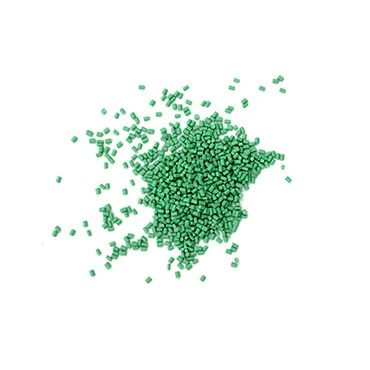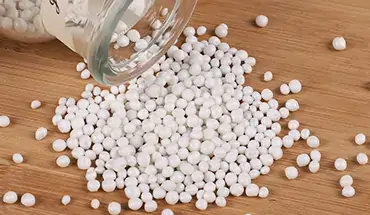The escalating global concern over plastic pollution has ignited a fervent search for sustainable alternatives. Amidst this environmental awakening, biodegradable materials have surged into the spotlight, capturing market interest and consumer acceptance. Polylactic Acid (PLA), an innovative bioplastic derived from renewable resources, has emerged as a frontrunner, finding widespread application in disposable products. Among these, PLA cups have garnered significant attention and have been lauded for their eco-friendly profile and promising performance. But can these plant-based vessels truly displace their ubiquitous plastic counterparts? In this article, you will learn about PLA cups’ environmental benefits, practical advantages, and potential pitfalls.

The Rise of Polylactic Acid (PLA): A Biodegradable Hope
To understand the potential of PLA cups, it’s crucial first to grasp the nature of PLA itself. Unlike traditional plastics derived from petroleum – a finite and environmentally problematic resource – PLA is produced from renewable resources such as corn starch and sugarcane. These agricultural feedstocks undergo a process of fermentation, similar to brewing beer, to create lactic acid, the building block of PLA. This fundamental difference in origin is the cornerstone of PLA’s environmental appeal.
A confluence of factors drives the shift towards bio-based plastics like PLA. Firstly, the sheer scale of plastic pollution is alarming. Mountains of plastic waste accumulate in landfills, leach harmful chemicals into the environment, and tragically, inundate our oceans, harming marine life and ecosystems. The Great Pacific Garbage Patch, a swirling vortex of plastic debris estimated to be twice the size of Texas, serves as a stark reminder of the global plastic crisis. Secondly, the production of conventional plastics is energy-intensive and relies heavily on fossil fuels, contributing significantly to greenhouse gas emissions and climate change. Finally, growing consumer awareness and stricter environmental regulations are pushing businesses and individuals alike to seek more sustainable options.
PLA emerges as a promising contender in this landscape. Its biodegradable nature, coupled with its renewable sourcing, positions it as a potentially transformative material in the fight against plastic pollution.
Environmental Advantages of PLA Cups
The environmental benefits of PLA cups are multifaceted and compelling:
- Renewable Resource Dependence: PLA’s derivation from plant-based sources directly addresses the issue of resource depletion associated with petroleum-based plastics. By utilizing annually renewable crops, PLA production lessens our reliance on finite fossil fuels and promotes a more circular economy. This shift is crucial in moving away from a linear “take-make-dispose” model towards a more sustainable system.
- Biodegradability and Compostability: Perhaps the most celebrated advantage of PLA is its biodegradability. Under specific composting conditions, typically found in industrial composting facilities, PLA will break down into carbon dioxide, water, and biomass within a relatively short timeframe, often within a few months. This stands in stark contrast to conventional plastics, which can persist in the environment for hundreds, if not thousands, of years, contributing to long-term pollution. It’s important to note that PLA is industrially compostable, meaning it requires specific temperature, humidity, and microbial conditions to degrade effectively. While some PLA may be home compostable, this is less common and depends on specific formulations and composting systems. Simply discarding PLA in a regular landfill or the natural environment will not guarantee rapid degradation and may still contribute to litter.
- Reduced Carbon Footprint: Life cycle assessments (LCAs), which analyze the environmental impact of a product from cradle to grave, generally show that PLA production has a lower carbon footprint compared to traditional plastics like PET (polyethylene terephthalate) and polystyrene (PS). This reduction is primarily attributed to the plant-based origin of PLA, as plants absorb carbon dioxide from the atmosphere during growth, effectively sequestering carbon. While the exact carbon footprint reduction varies depending on production methods and LCA methodologies, the consensus is that PLA offers a more climate-friendly alternative. Furthermore, advancements in PLA production are continually being made to further optimize energy efficiency and minimize environmental impact.
Advantages and Considerations of PLA Cups in Practical Application
Beyond their environmental virtues, PLA cups offer several practical advantages, but also present certain considerations:
- Safety and Non-Toxicity: PLA is generally recognized as safe for food contact and is non-toxic. It complies with food safety regulations in many regions, making it suitable for holding a wide range of beverages, both hot and cold (though heat resistance is a key consideration discussed below). This inherent safety is a significant advantage over some conventional plastics that may contain harmful chemicals like BPA (Bisphenol A) or phthalates.
- Excellent Physical Properties for Cold Beverages: PLA exhibits excellent clarity and rigidity, making it visually appealing and structurally sound for cold beverages. In terms of appearance and functionality for cold drinks, PLA cups can closely mimic traditional PP (polypropylene) or PET cups, offering a familiar user experience. This is particularly relevant for takeaway cold beverages, iced coffees, smoothies, and juices.
- Processability and Manufacturing Compatibility: PLA is compatible with conventional plastic manufacturing processes like injection molding, thermoforming, and extrusion. This compatibility is a significant advantage for manufacturers transitioning to PLA, as it minimizes the need for costly infrastructure upgrades. This ease of processability can contribute to lowering production costs and facilitating wider adoption.
- Limited Heat Resistance: A key limitation of PLA is its relatively low heat resistance compared to some conventional plastics. PLA typically softens and deforms at temperatures above 60-70°C (140-158°F). This makes PLA cups generally unsuitable for very hot beverages like freshly brewed coffee or tea without additional design considerations or modifications. While PLA cups are often used for “hot” drinks, it is usually for beverages that have cooled slightly or are intentionally served at lower temperatures. For very hot beverages, alternative biodegradable materials with higher heat resistance, or double-walled PLA cups for insulation, might be necessary.
- Cost Considerations: Historically, PLA has been more expensive to produce than conventional plastics due to factors such as feedstock costs and production scale. However, as PLA production volumes increase and technology advances, the price gap is narrowing. Furthermore, considering the long-term environmental costs associated with plastic pollution and the potential for policy incentives and consumer demand for sustainable alternatives, the overall cost-effectiveness of PLA cups is becoming increasingly competitive.
“Toxic Disguised as Eco-Friendly?”
Unscrupulous manufacturers are potentially adulterating PLA with cheaper, non-biodegradable plastics like polypropylene (PP) and plasticizers to cut costs. This practice undermines the environmental benefits of PLA and can even introduce harmful substances. The report of BPA release from inferior PLA cups at temperatures above 60°C is concerning and highlights the importance of quality control and consumer awareness.
While PLA itself is not inherently toxic or harmful, the issue of adulteration is a legitimate concern. To mitigate this risk, several measures are crucial:
- Robust Regulatory Frameworks and Standards: Governments and industry bodies need to establish clear standards and regulations for PLA products, including labeling requirements, biodegradability certifications, and limits on the use of non-biodegradable additives. Independent certification schemes can provide consumers with assurance that products meet specific environmental and quality criteria.
- Consumer Education and Awareness: Educating consumers about how to identify genuine PLA products is crucial. Checking labels for “PLA” markings and assessing texture is a good starting point. Consumers should purchase PLA cups from reputable brands and suppliers who prioritize quality and sustainability. Looking for recognized compostability certifications on packaging can also provide reassurance.
Proactive Adoption of PLA Cups Now
- Globally, governments are increasingly implementing policies to restrict single-use plastics and promote biodegradable alternatives. These policies range from outright bans on certain plastic items to levies and taxes on plastic packaging. The European Union’s Single-Use Plastics Directive, for example, mandates significant reductions in the consumption of single-use plastic cups. Similar regulations are being enacted at national and local levels worldwide. Adopting PLA cups allows businesses to proactively comply with these evolving regulatory landscapes and avoid potential penalties.
- Consumer environmental consciousness is on the rise. Surveys consistently show that a significant and growing segment of consumers is willing to pay a premium for eco-friendly products and services. PLA cups, as a visibly sustainable alternative to plastic cups, resonate strongly with environmentally aware consumers. Offering PLA cups can enhance brand image, attract and retain customers, and tap into the expanding market for sustainable products. This is particularly true in developed nations where sustainability is a strong consumer value.
- Corporate Social Responsibility (CSR) and Brand Image: Businesses are increasingly recognizing the importance of CSR and sustainability in enhancing brand reputation and building stakeholder trust. Switching to PLA cups is a tangible demonstration of a company’s commitment to environmental responsibility. Major coffee chains, fast-food outlets, and beverage brands that have adopted PLA cups often highlight this transition in their marketing and communication efforts, effectively communicating their eco-values and enhancing their brand image. This can lead to improved brand perception, customer loyalty, and positive public relations.
- Long-Term Cost Savings and Innovation: While the initial cost of PLA cups might be slightly higher in some cases, businesses should consider the long-term cost implications of plastic waste disposal, potential future taxes on plastic, and the reputational benefits of sustainability. Furthermore, embracing sustainable materials like PLA can drive innovation within businesses, encouraging them to explore other eco-friendly packaging solutions and operational practices.
PLA Cups in the Broader Context of Sustainable Disposables
While PLA cups offer a significant step forward, it’s crucial to recognize that they are not a silver bullet solution to the disposable culture. Ideally, reducing overall consumption and promoting reusable alternatives should be the primary focus. However, in situations where disposable cups are necessary, PLA cups offer a demonstrably more sustainable option compared to conventional plastics.
The suggestion of washing and reusing PLA cups is also worth considering, although their inherent brittleness might limit their reusability compared to more durable reusable cups made from materials like glass, ceramic, or stainless steel. However, for occasional reuse within a short timeframe, washing PLA cups can further extend their lifespan and reduce waste.
Embracing PLA Cups Responsibly – A Step Towards a Sustainable Future
PLA cups represent a significant advancement in the quest for sustainable alternatives to plastic cups. Their renewable sourcing, biodegradability, and reduced carbon footprint offer compelling environmental advantages. While challenges related to cost, heat resistance, and ensuring product authenticity exist, these are being actively addressed through technological innovation, regulatory frameworks, and growing industry and consumer awareness.
Businesses should proactively consider transitioning to PLA cups, driven by policy incentives, consumer demand, CSR considerations, and the long-term benefits of embracing sustainable practices. However, it’s crucial to source PLA cups from reputable suppliers, ensure quality control, and educate consumers on proper disposal methods, ideally through industrial composting.
Ultimately, PLA cups are not a perfect solution, but they are a significantly better alternative to conventional plastic cups in many applications. Their widespread adoption, coupled with ongoing efforts to improve PLA production, recycling infrastructure, and consumer education, can contribute meaningfully to reducing plastic pollution and fostering a more sustainable future for disposable tableware. The journey towards a truly circular economy requires a multi-faceted approach, and PLA cups represent a valuable tool in this transition – a step in the right direction, but not the final destination.





